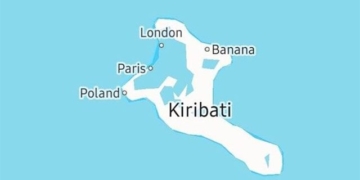A firestorm comparable to the period when the Chicxulub asteroid struck Earth and caused the extinction of all dinosaurs occurred 12,800 years ago, not to mention the subsequent 1,000 years of freezing temperatures.

Earth once burned up to 10% – (Illustrative image from iStock)
This conclusion comes from a study published in the scientific journal Journal of Geology, conducted by 24 scientists from various countries. According to Dr. Adrian Melott from the University of Kansas (USA), a member of the research team, geochemical signatures and isotopes measured from over 170 locations worldwide revealed that Earth experienced burning of up to 10% of its surface.
The cause was a giant comet that fragmented, with many pieces crashing into Earth and causing a widespread firestorm. This firestorm rivaled the one that occurred when the Chicxulub asteroid impacted Earth 66 million years ago, leading to the extinction of all dinosaurs, according to Science Alert.
Miraculously, at that time, humans—represented solely by our species, Homo sapiens—while certainly suffering significant population losses, managed to survive the disaster.
Moreover, after the firestorm, the amount of ash and dust released into the atmosphere, which blocked sunlight for an extended period, triggered an extremely harsh ice age lasting up to 1,000 years. This phenomenon is linked to the catastrophic Younger Dryas period, which caused the extinction of many species around the world.
This finding also explains some strange archaeological evidence suggesting that the world once endured an “alien attack”, such as carvings found in Turkey in 2017 that depict the devastating impact from an object originating from the cosmos.




















































